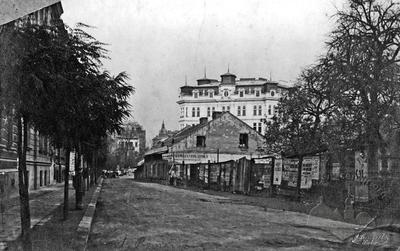
Saksahanskoho Street
- ID: 99
- Place: Lviv
Interested in everything new, Lviv residents examine the first Lviv trams, of which there were 16; in the photo - cars No. 7 and 14. Regular electric tram service in Lviv began on May 31, 1894. From that day until the closing of the General Regional Exhibition of 1894 in early October, the city was filled with extraordinary excitement—the residents of Lviv felt the breath of progress.
According to S. Tarkhov (“History of the Lviv Tram,” Lviv, 1994): "The electric railway of the city of Lviv, built by Siemens & Halske, is a system proposed by American engineer Sprague, with overhead current collection (current collector)... All 16 cars were manufactured at the Siemens & Halske factory. The cars move because the current circulating through the wires stretched above the cars enters the car's dynamoelectric machine via the current collector...and rotates it. The rotational movement of the machine is transmitted to the wheel axles by means of a chain drive. Each car is lit by five electric lamps." The event depicted in the image takes place on Zyblykevych Street. In 1886, Zyblykevych Street was named after the section of the current Iv. Franko Street from the beginning of Zelenaya Street to the beginning of Stryiska Street. The first building on the right is on the corner of Scyezhkova Street, later Romanovich Street, and since December 1944, Saksaganskogo Street. The second street on the right is St. Nicholas Street (since 1990, it has been named after the first president of Ukraine, historian Mykhailo Hrushevsky). In the distance, you can see the tops of the pavilions and rotunda of the Raclavice panorama of the General Provincial Exhibition of 1894.